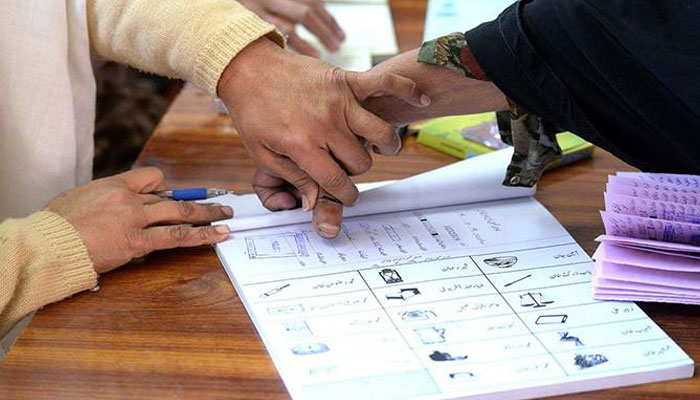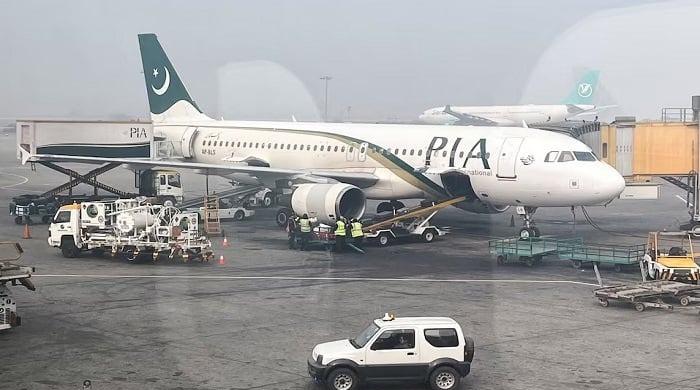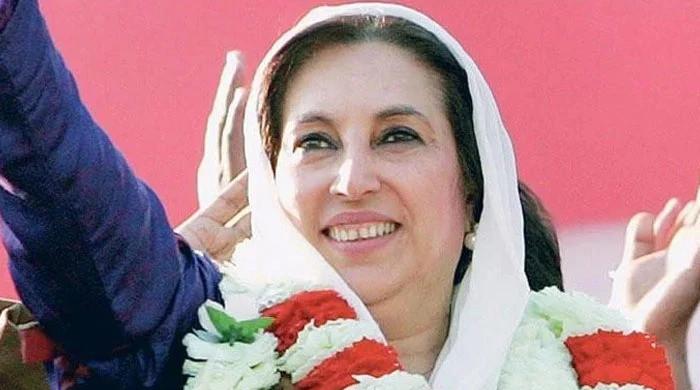Narratives and the Punjab by-election
If a large part of Pakistan’s population can be swayed simply by demagoguery without an inclination to verify the facts behind any political narrative, where are we headed
July 21, 2022

While the PML-N’s loss in 15 out of 20 seats in the Punjab by-election has been characterised as a humiliating defeat for the party in the province considered to be its stronghold, is it really a case as simple as this?
Twenty-five Punjab MPAs belonging to the PTI were de-seated by the ECP for defying party directives and voting for Hamza Shehbaz Sharif for the post of the Punjab chief minister. Of these 25 seats, five seats belonged to MPAs elected on reserved seats. The ECP notified five PTI MPAs to fill these reserved seats on July 6.
The by-election to re-elect Punjab MPAs on 20 seats across Punjab from Rawalpindi to Dera Ghazi Khan were scheduled to be held on July 17 and as the results have shown, the PTI has emerged victorious on 15 out of 20 seats, the PML-N has bagged four seats while one independent candidate has also won.
Comparing the results of these 20 seats with the General Election of 2018, nine of these Punjab Assembly seats were won by independent candidates (who later joined the PTI) and 11 Punjab Assembly seats were won by the PTI candidates in 2018. Not a single of these 20 seats was won by the PML-N in General Election 2018.
In the 2022 by-poll, however, the PML-N has won two seats earlier won by independent candidates, namely PP-7 Rawalpindi-II and PP-237 Bahawalnagar-I. The PML-N candidates have also defeated the PTI candidates on two seats earlier won by the PTI – PP-168 Lahore-XXV and PP-273 Muzaffargarh-VI.
At a glance, the PML-N has improved its position in these by-elections compared with the results of General Election 2018. The PTI has also improved its electoral position from winning 11 seats in 2018 to 15 seats in the 2022 by-election.
Another comparison can be drawn by drawing a parallel between the vote share received by the two parties in these 20Punjab Assembly seats. The PTI has received 49.5% votes compared to 33% votes in the 2018 General Election.
The PML-N has received 41.7% votes in the 2022 by-election compared to 25% votes polled in favour of its candidates in 2018). Interestingly, however, the difference between the vote share of both parties remains eight percentage points in both the 2018 General Election and the 2022 by-election.
With the addition of new voters to the voting list between 2018 and 2022, a credible exit poll can shed light on the voting pattern of 18–23-year-old new voters in these constituencies.
In reality, however, these were no ordinary by-elections. The voter turnout alone compared more with a general election than with the standard low voter turnout in by-elections.
The PTI has emerged as a party that has captured the hearts and minds of a large number of voters in Punjab. This phenomenal victory can largely be attributed to the PTI's anti-establishment and anti-US narrative.
The PML-N, on the other hand, seems to be losing the plot on narrative-building. While it might be too soon to say the PML-N is on the losing track in capturing the hearts and minds of the electorate, it has no single narrative after side-tracking from its ‘vote ko izzat do’ narrative coined by Nawaz Sharif after his ouster from office in 2017.
Nationwide public opinion polls after Imran Khan’s ouster as prime minister had indicated that there is a widening gap of public perceptions between what was offered as a reason by the then-opposition behind the vote of no-confidence against Khan and what Khan claimed to be the reason.
A snap poll conducted by Gallup Pakistan on the no-confidence motion in April 2022 showed that the nation was deeply divided in the aftermath of the VoNC.
In keeping with the profile of more females, more educated, more urban, and younger voters supporting the PTI in earlier elections, the poll shared that the fractured public opinion was manifested along these lines in respondents being angry at Khan’s ouster as prime minister.
When asked whether Khan was removed from office due to inflation, as maintained by the then opposition, or due to a foreign conspiracy, as proclaimed by the Khan-led PTI, 66 of the respondents in April 2022 believed Khan’s premiership was terminated due to inflation while 36% believed it was due to a foreign conspiracy.
In response to the same question asked of respondents in a nationwide poll in May-June 2022, those who believed Khan’s government was ousted due to inflation were down to 48% while 46% respondents believed the government was ousted due to a foreign conspiracy.
Similarly, in April 2022, 43% respondents were angry at the removal of Khan’s premiership and 57% were happy. In answering the same question in May-June 2022, around 61% respondents said they were angry at the success of the VONC against PM Khan while only 39% respondents said they were happy at the outcome.
In the same fashion, in the April 2022 Gallup Pakistan snap public opinion poll, in responding to a question whether a general election should be held earlier than the scheduled time of 2023, around 31% respondents believed the general election should be held on time while 69% respondents believed early elections should be held.
In answering the same question in May-June 2022, per the poll 76% respondents supported holding an early general election compared to the reduced 24% respondents supporting a general election to be held in 2023.
As the Punjab by-elections show, narrative-building might be at heart of increasing public support for Imran Khan’s PTI. There is, however, a sobering aspect to this.
If a large and increasing part of Pakistan’s population can be swayed simply by demagoguery without an inclination to verify the facts behind any political narrative, where are we headed as a country in the next few decades of our democratic evolution? The world, including our neighbourhood, has faced grievous consequences of populist politics and electing populist leaders. With our ever-increasing challenges as a country, can we afford to go down this treacherous road?
The writer is an analyst working in the field of politics, democratic governance, legislative development, and rule of law.
Originally published in The News









